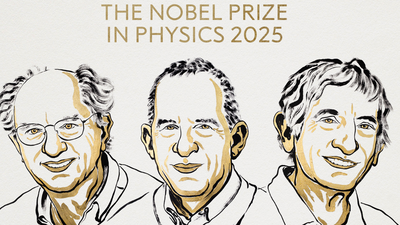



The 2025 Nobel Prize in Physics was awarded to John Clarke, Michel Devoret, and John Martinis for experimentally demonstrating quantum tunnelling in macroscopic electrical circuits—something previously believed to occur only at the atomic scale.

Copyright infringement not intended
Picture Courtesy: Times of India
The 2025 Nobel Prize in Physics was awarded for experiments demonstrating that quantum tunnelling, a hallmark of the microscopic world, can also manifest in an electrical circuit large enough to be observed directly.
Quantum tunnelling is a phenomenon in quantum mechanics where particles pass through a potential energy barrier that, according to classical physics, they should not be able to cross. Unlike classical objects, quantum particles behave as waves, and these wavefunctions can extend through—and even emerge from—the other side of a barrier.
The process relies on the nature of quantum wavefunctions. Even when a particle does not have enough energy to overcome the barrier classically, its wavefunction can "leak" through the barrier. If the barrier is thin enough (typically between 1–3 nanometres), there is a non-zero probability that the particle will be found on the other side.
Source: Times of India
|
Practice Question Q. Describe the significance of the experiments conducted by Clarke, Devoret, and Martinis that led to their Nobel Prize in Physics in 2025. |
Quantum tunnelling is a quantum mechanical phenomenon where particles pass through an energy barrier that they classically shouldn’t be able to cross. This happens because the particle’s wavefunction extends beyond the barrier, allowing a finite probability of appearing on the other side.
In classical physics, particles need enough energy to overcome a barrier. Quantum tunnelling allows particles to "tunnel" through barriers without having to climb over them, which is impossible according to classical mechanics.











© 2025 iasgyan. All right reserved